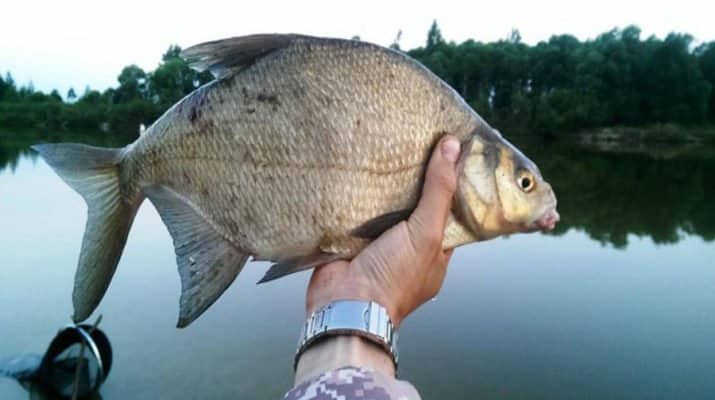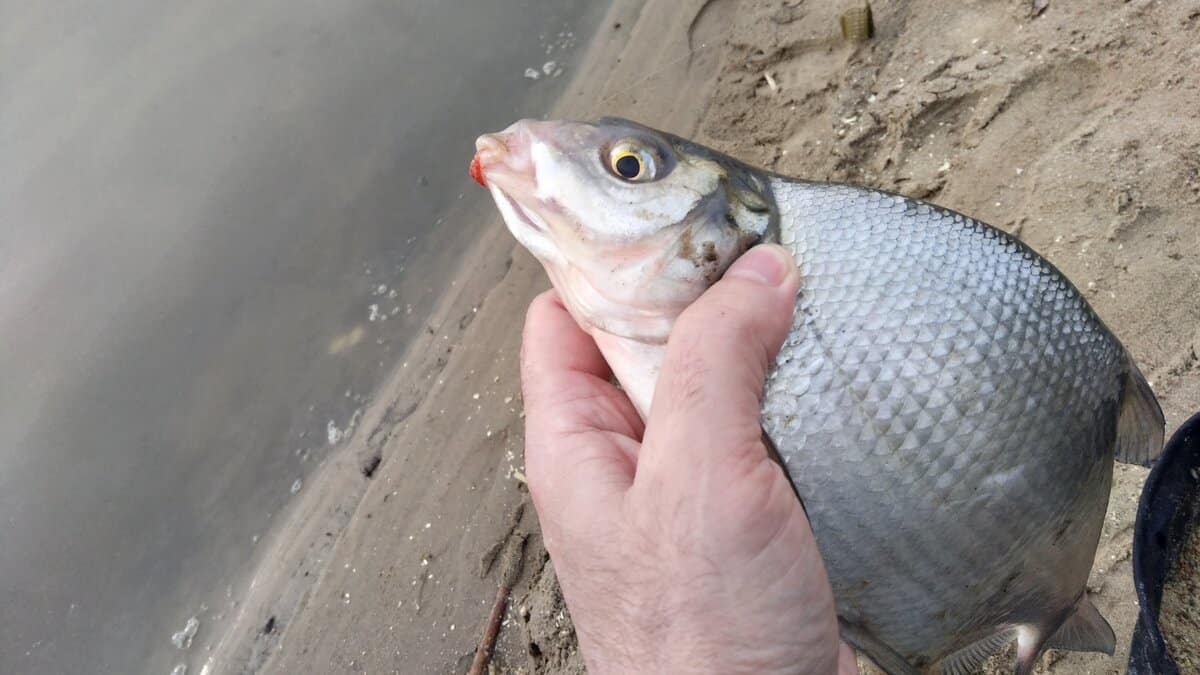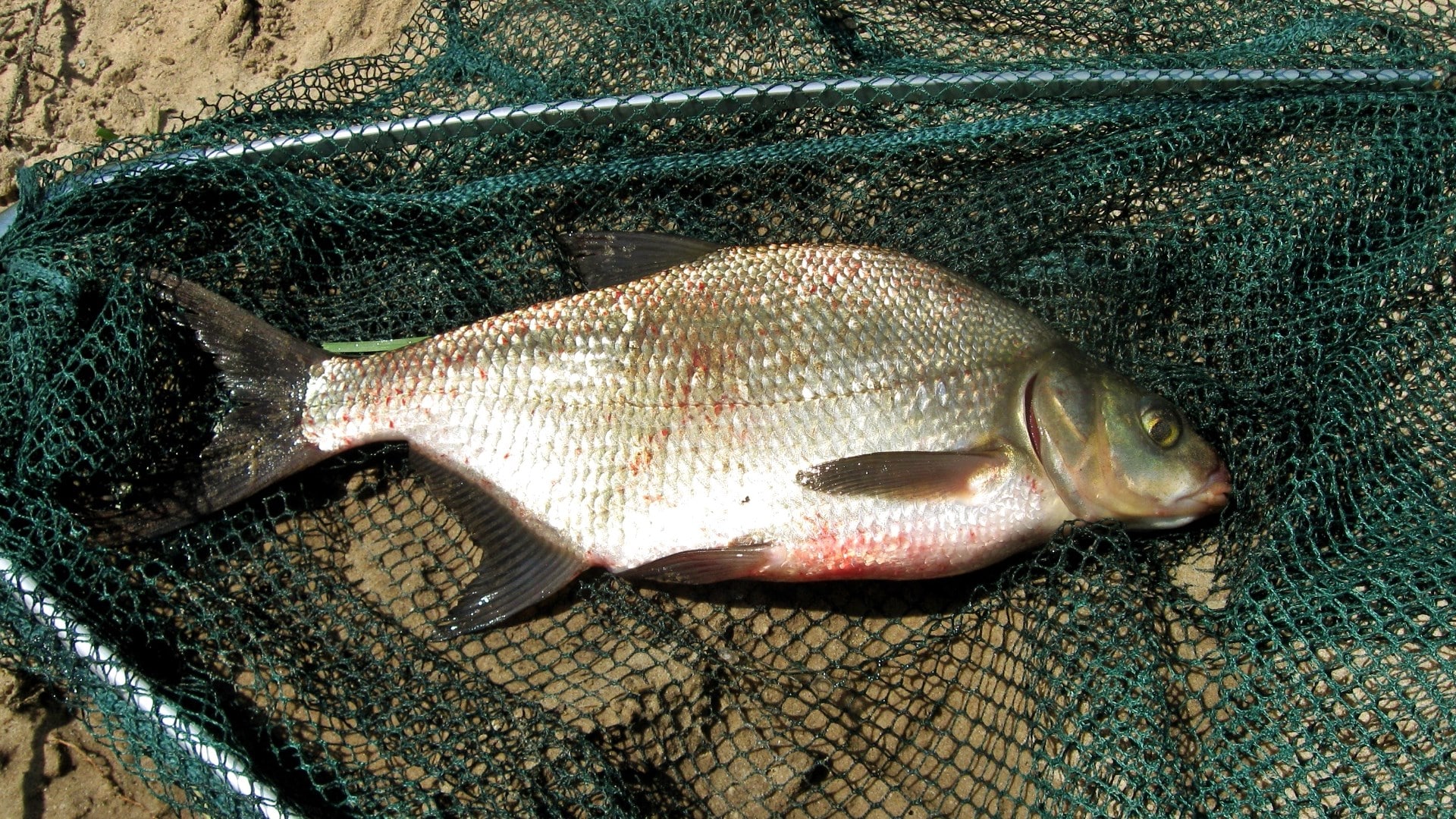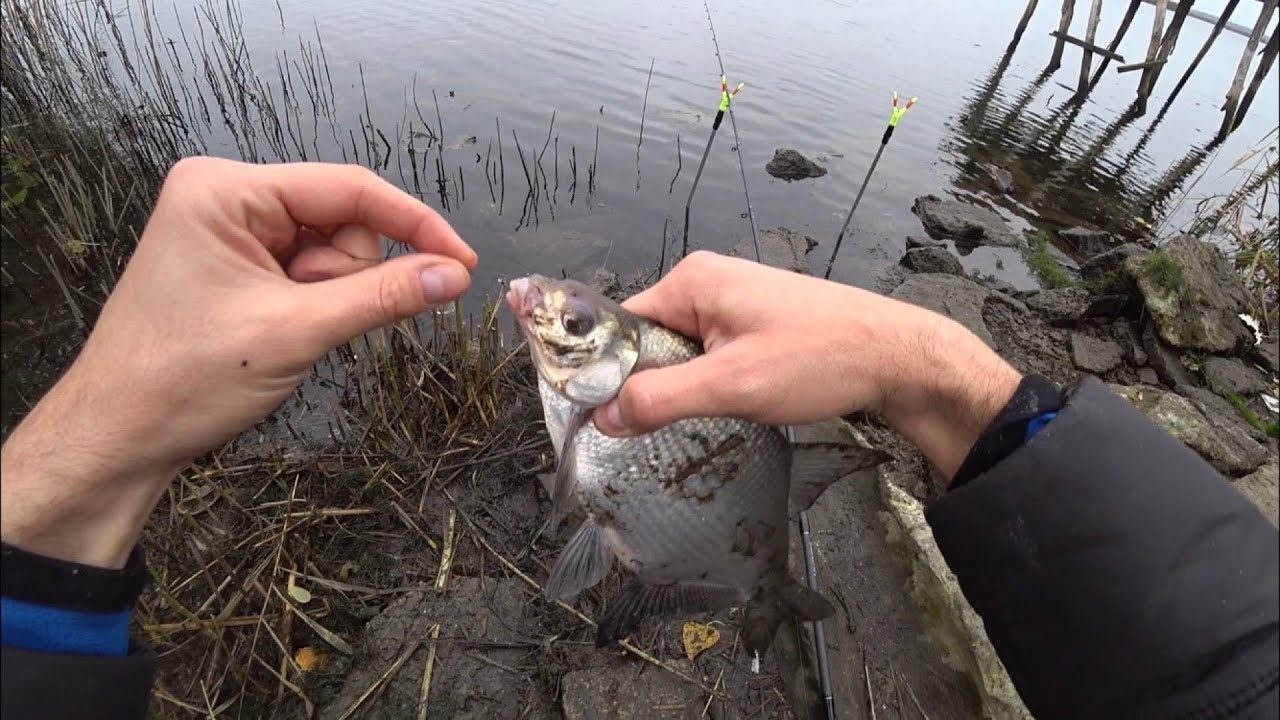Fishing for bream on the ring is a popular, effective fishing method that is not known to all fishermen, but can be used all year round, both when fishing from a boat (it is worse to fish from the shore), and when fishing from ice in winter. Tackle ring (ringing) is an original fishing equipment with which you can get a good result
when catching bream in the current , a special feeder is used for fishing, two parallel cords passed through a special ring with a slot, one of which has hooks with a nozzle, and the second Cormac with
bait .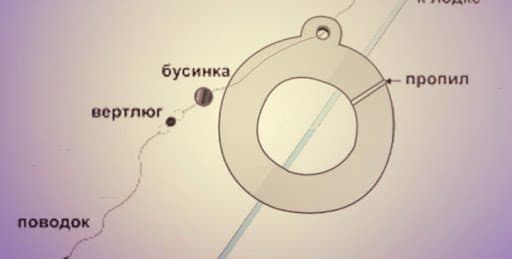
What kind of tackle such a “ringing”, description and features
Ringing is a fishing tackle that can suit those who are used to actively working on fishing, and not just take part or watch. The rig is a non-removable ring with a diameter of up to 50 millimeters and a thickness of up to 10 millimeters, inside which a fishing line, a swivel, a leash, a bead and a hook are placed through a special slot. The line is placed against the edge of the edging. In some types of rings, soldering occurs, drilling a hole through which the main line is inserted. A stopper is placed before the fishing line to limit the movement of the leashes and to avoid damage to the tackle. A swivel is used for the stopper, but the bead must be fixed.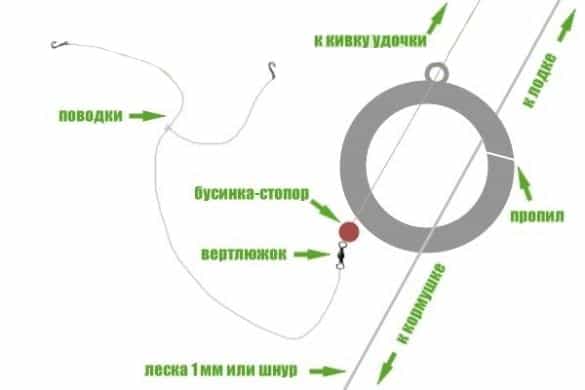
- ring with a leash;
- removable ring;
- ring “eggs”.
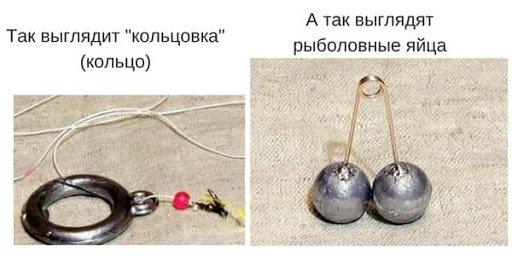
ringing with a leash , a half-meter thick fishing line with a diameter of 0.3-0.5 mm is placed in the hole … A fishing line of this thickness is needed so that the leash does not get confused during casting and further fishing. On the other side of the line, a swivel with a carabiner is tied. A cord with tackle will go through the latter. To limit the sliding of the leash carabiner, a carabiner mechanism or a large bead is placed at the bottom of the cord.
Detachable ring– a mechanism with a ring, at the edges of which a cut is made. It is blocked with wire tendrils or a rubber tube baffle. The structure, therefore, consists of a ring, main line, a line to the boat, antennae and a line to the feeder. In the third modification –
eggs , the main purpose is given to two lead balls. They are fastened together with wire and pins. The balls under the wire pressure begin to press against each other and prevent the line from flying out of the slot. In the ring of the pin there is a line with a monofilament leash line. During the bite, the line goes between the balls and the fishing tackle of the egg does not get confused with the feeder.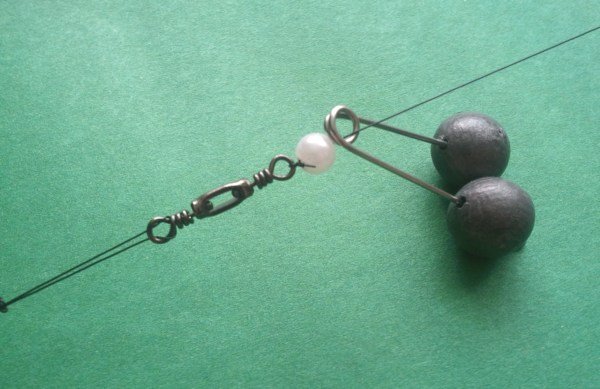
Interesting to know. During the years of the USSR, the tackle ring could not be used to preserve the bream as a species. Today you can fish in any way within the framework of the fishing law.
The plus of the rigs is that you can fish in the best places, but inaccessible when using many other tackles: holes, curbs and hard-to-reach areas near the snag. It can be actively used both in reservoirs with a slow stream and with a rapid current.
, silver bream, roach, blue bream, carp and ide. The feeder net beckons and holds the fish, and hooks going in the distance do not alert cautious fish as much as when fishing, for example, on a
donk or
feeder .
What is needed to equip the ring, what elements are needed and how to put them together
Feeders are used differently. They are made of metal and a simple nylon mesh. The main requirements for the trough: capacious, rather heavy at the bottom of the container. At the bottom of the river, feeders for fishing on the ring should be placed in a standing manner, for this reason, they should be lowered vertically, without throwing the tackle into the water.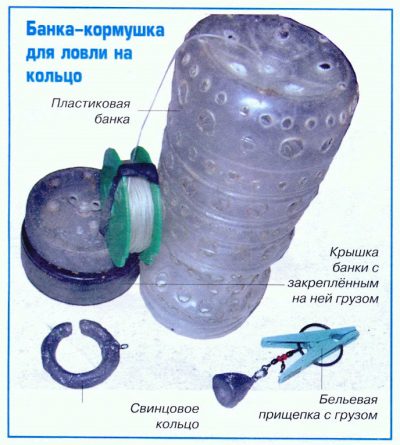
- Attach the rod to the boat mount, prepare the feeder for ring fishing.
- Put the ring on the cord, tie the feeder to it. If it has a removable structure, then it will be easier to attach. Fill the feeder with lure, carefully lower it to the river bottom. Pull the cord and lower the tackle along it. While fishing on the ring from the boat, it is easy to raise and lower it a little to flush out the bait.
- Place the bait on the hooks, lower the leash or several into the water, while at the same time they begin to stretch directly under the action of the current.
- Carefully lower the ring to the bottom. Along with the ring, lower the fishing line, leads and hooks.
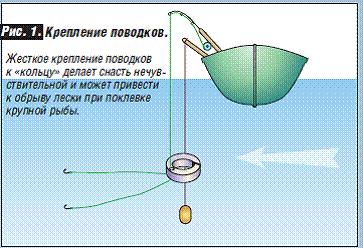
Note! For fishing in the area of a strong current, so that the hooks stay on the pond near the trough and the ring, they must be carefully fixed in the slot of the ring. It is also worth putting a stopper pellet made of lead.
Strike when biting should be done abruptly. The ring should not be lifted during fishing. When fishing for bream, place the ring in the boat or attach it securely to the boat cylinder. Tackle ringing with your own hands – schematically and clearly: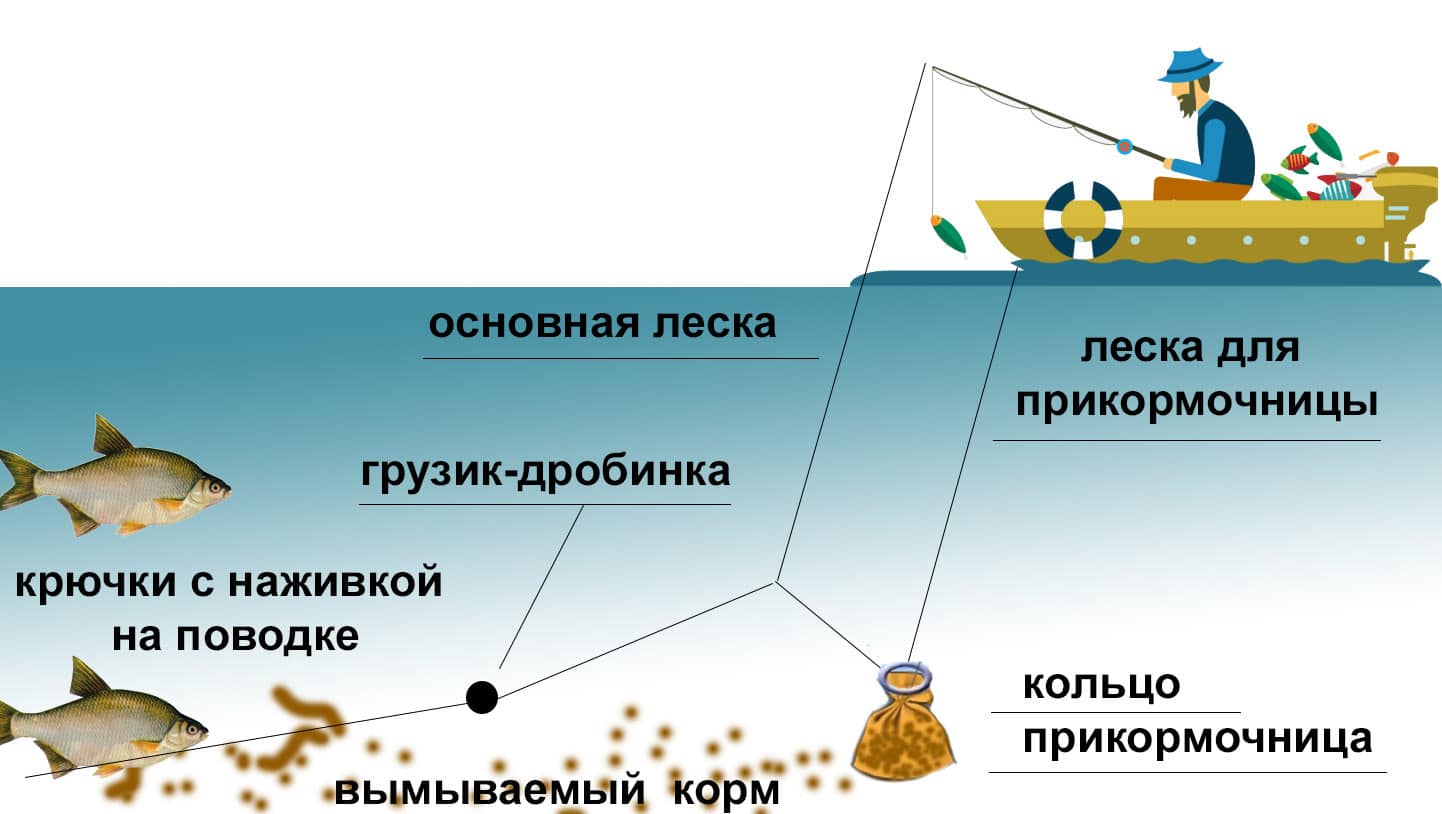
Choosing a place to catch bream
When choosing a place to catch bream on a ring, you should give preference to deep reservoirs with a current, soft soil and fairway pits. It is easier to find bream using an echo sounder. While exploring the river bottom, it is worth stopping:
- at the bend of the river;
- at the river constriction;
- at a deep cleft;
- at the edge, snag.
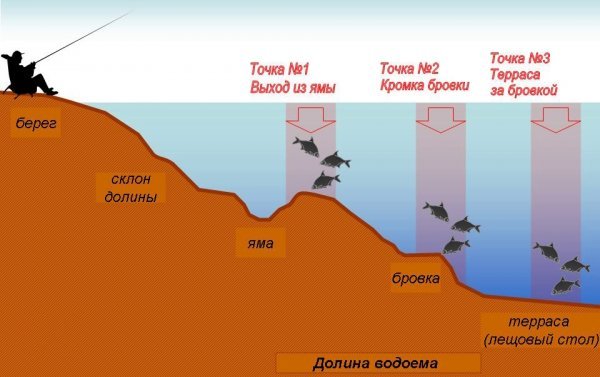
Ring Fishing Secrets
To catch bream or other fish on the ring, you need to use a short rod not 0.7-1.4 meters long, monofilament or fluorocarbon line 0.25 mm in diameter, a spinning inertial reel, a bite alarm (bell or bell). You can also use “egg” type sinkers instead of a ring, a metal feeder with a mesh size of 5 by 5 millimeters, two or three hooks (for catching small fish 1-3 number, small bream 4-6 number, carp and large bream 7-10 number , pike perch, catfish and barbel 10-15 hook number).
. In spring and autumn, you can fish for a worm,
bloodworms… For hoop fishing, flavors should also be used in the bait mixture (sprays or dips are sold at a fishing store). As a bait, you need to use cereals with seeds, worms, maggots, wheat bread crumbs. As for the technique of fishing, you need to proceed as follows. Put the attachment on the hooks, lower the ring down to the feeder. Put the rod on board and determine the bite by vibration. The feeder remains on the bottom while playing. The most catchy places for bream fishing are irrigation, a section of the muddy bottom, an area near the pits, which are located at a depth of five or six meters.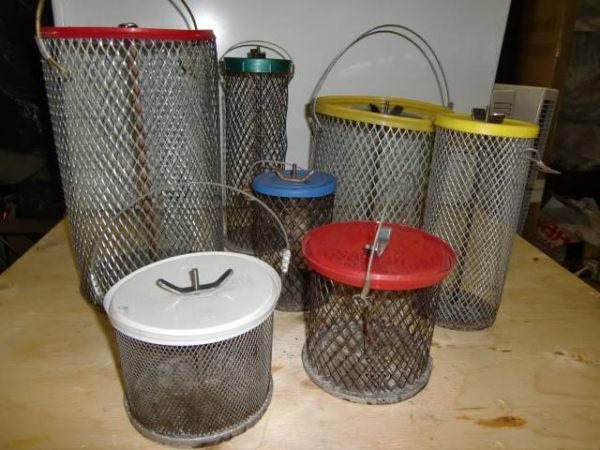
Hoop fishing in winter – video from ice: https://youtu.be/cTQJLLdX8vc Hoop fishing is especially effective at great depths and strong currents.

